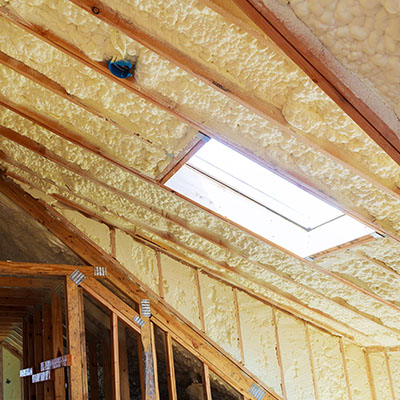Insulating your pitched roof is one of the most efficient ways to insulate your home, save money, and reduce your carbon footprint.
From reducing your monthly energy bill, to adding value to your home, rafter insulation can bring a lot of benefits to your home.
Around 25% of the heat in your home is lost through the roof. With quality pitched roof insulation, you can reduce this percentage significantly, and preserve the heat in your home. Installing pitched roof insulation is an effective way of using less energy, and in turn you’ll see a reduction in your monthly energy bill, too.
As you reduce your energy consumption through well insulated roofing, in turn, you’ll reduce your carbon footprint. Consuming energy through heating and cooling your home has harmful consequences for our planet. Installing a quality pitched roof insulation system is a sustainable solution for you and allows you to do your part for the planet.
Pitched roof insulation might decrease your carbon footprint and your energy bills, but one thing it won't decrease is the value of your property – as savings will be passed onto the next owner of your home, allowing you to benefit from the sale. Additionally, it can increase your property's value due to its improved structural integrity and soundproofing properties - making for a more robust home.
Whilst there are many types of pitched roof insulation, here at Eco Spray-Foam Systems, we strongly recommend using spray foam insulation. With spray foam roof insulation, you’re more likely to reap the maximum thermal benefits.
Open cell spray foam is our customer favourite product when it comes to rafter insulation. This type of pitched roof insulation can be installed quickly by a qualified team – often within a half a day.
It boasts an improved quality of soundproofing compared to other types of roof insulation, making it perfect for living in built-up areas. The quality of this soundproofing is improved massively when paired with spray foam cavity wall insulation.


If the underside of your roof tiles are exposed, or the existing membrane is damaged – then a new breathable membrane can be supplied (something your surveyor and our office team will make clear to you).
A team of at least two installation experts with full accreditation and PPE will be happy to insulate your home to the highest quality. After arriving promptly they can clear the workspace and cover any large or heavy items to keep them safe.
Your spray foam rafter insulation is then applied between the timbers and ensures a fill to all edges, unlike other types of insulation. After a short curing period, your new roof insulation is ready to begin saving you money on your energy bills!
We understand that when trusting a company to install your pitched roof insulation, you’ll want to do your checks thoroughly. Therefore, as experts with 20+ years’ experience in the insulation industry – we champion transparency as a key pillar of everything we do. We have a 9.5 Checkatrade rating from over 100 of our valued customers and are always happy to answer any enquiries about our services.
If you have any questions about our pitched roof insulation services, or would like to receive your free quote, then please get in touch with us through our online contact form.
A pitched roof is any roof at angle between 10° and 70°. Any less is a flat roof, and any more is technically a wall! A pitched roof is the most common type of roof in the UK and requires rafter insulation to stop heat escaping through your roof.
The thickness of your roof insulation all depends on the type of insulant you’re using. Traditional fibreglass insulation has a recommended thickness of 300m, whereas spray foam can improve the energy efficiency of your home with just 100mm applied.
You may have heard of these two types of insulation. While they don’t refer to products themselves, they are two methods that can be used to insulate your home. Warm loft sees insulation applied directly to your pitched roof, creating a warm environment in your loft – making it perfect for living, working or storage. If you don’t use your loft, then the cold loft option could be the one for you! By insulating the floor of your loft, it keeps the heat inside the parts of your home you use every day. However, this method comes with its own risks including condensation and damp in your loft. One of our team will be happy to go through your options with you if you simply phone 0203 411 5188.
Loft conversion is a popular option among UK residents looking to add new living or working spaces to their home. If you are yet to have the rooms added to your loft, then spray foam pitched roof insulation can be simply applied to your roof before other works commence. If you have the rooms in your loft now and have decided you need pitched roof insulation, then we can simply cut small sections of your plasterboard out and fill with spray foam to ensure a complete fill on your pitched roof. We understand that this may cause a lot of apprehension, but our office and survey team will be happy to discuss just how stress-free this can be.





